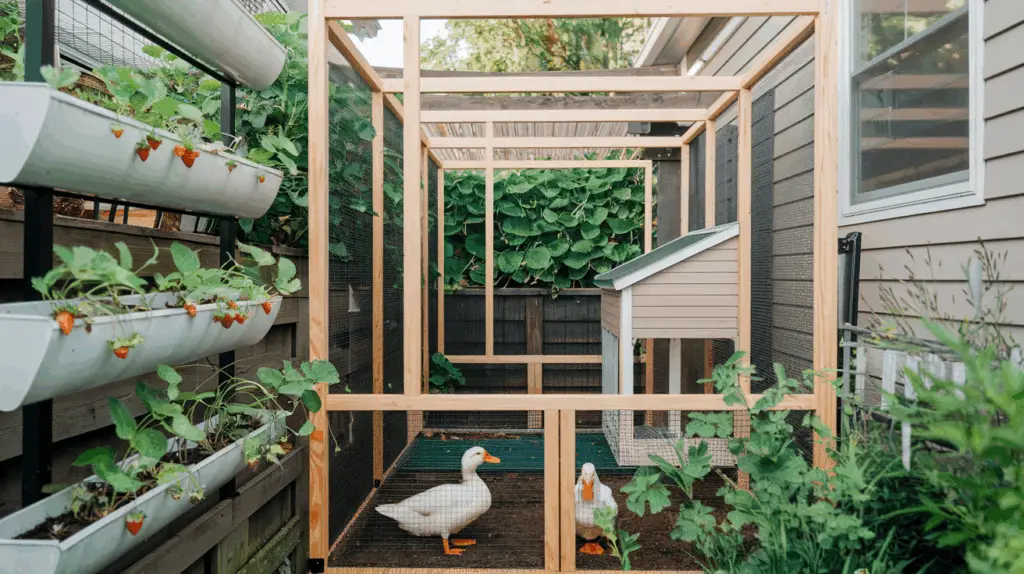
So here’s how it starts. You’re sipping your coffee, scrolling through photos of tidy garden ducks living their best splashy lives, and suddenly you’re googling “DIY duck enclosure ideas” with three tabs open and no real plan. I get it. Ducks are hilarious, messy, and weirdly therapeutic—and giving them a proper run is half for them, half for your own peace of mind (and lawn).
The good news is, you don’t need a full farm or an architect’s blueprint to make something that looks good and works. Whether you’ve got a shady patch under the trees or a narrow stretch beside the house, there’s a duck run setup that’ll work with what you’ve got. Think simple fencing, easy-clean flooring, maybe a little splash zone if you’re feeling extra. It’s all about keeping things safe, low-maintenance, and dare I say—pretty cute.
Here are a few duck run ideas that don’t scream “chaos” but still let your birds do their daily waddle, forage, and nap routine in style.
Shaded Gravel Duck Run Along the Fence
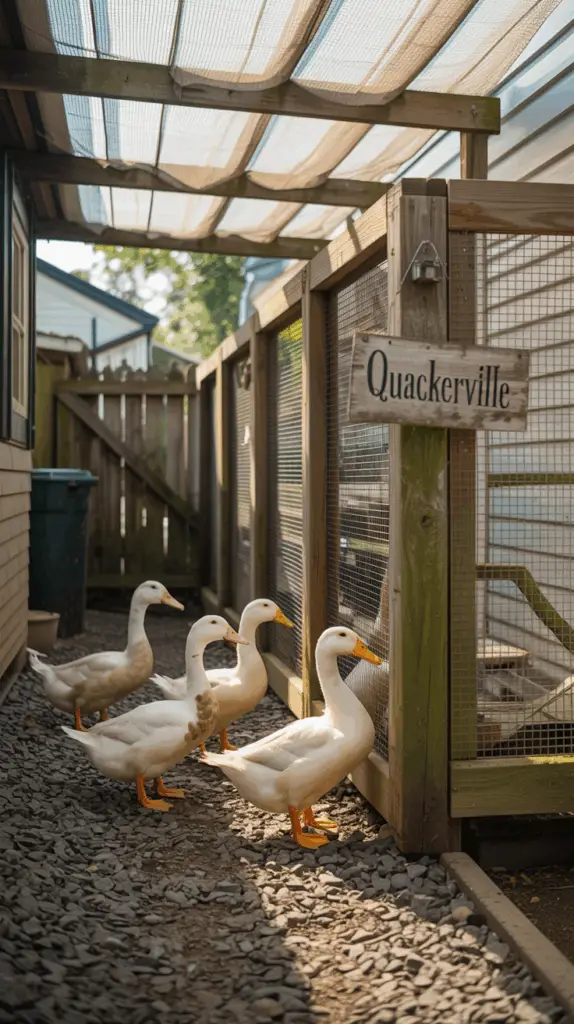
Got a long, narrow side yard? It’s practically made for ducks. Lay down a strip of gravel or coarse sand for easy drainage (mud is duck heaven, but you’ve got to draw the line somewhere). Use wooden posts and wire mesh for fencing, and run a slatted shade cloth overhead to cut the afternoon sun.
A basic coop at one end gives them shelter, and a few potted herbs or low shrubs make it feel less like a cage and more like a stroll garden with bonus waddles.
Compact Courtyard Duck Run with Concrete Pavers
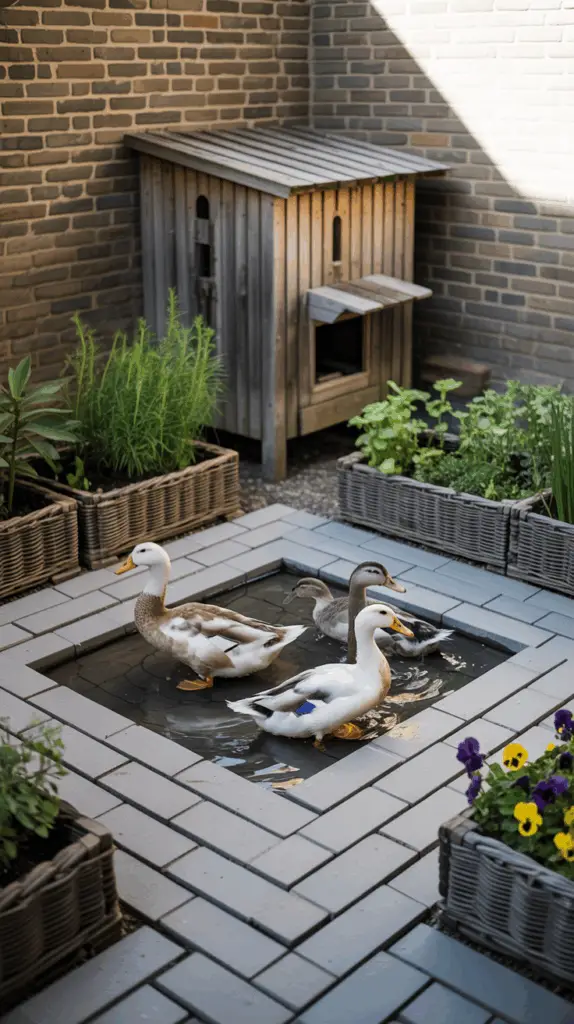
If you’ve only got a small courtyard or a chunk of patio space to work with, no problem. Use raised planters or half-walls to define the run area, then lay down concrete pavers in a herringbone or brick pattern for a modern look that’s also easy to hose down.
Add a corner coop with a sliding door and a little waterproof awning for shade. A shallow tub of water and a few toy logs or overturned plant pots? That’s enrichment, duck-style.
Split-Pen Duck Run with Rotational Grass Zones
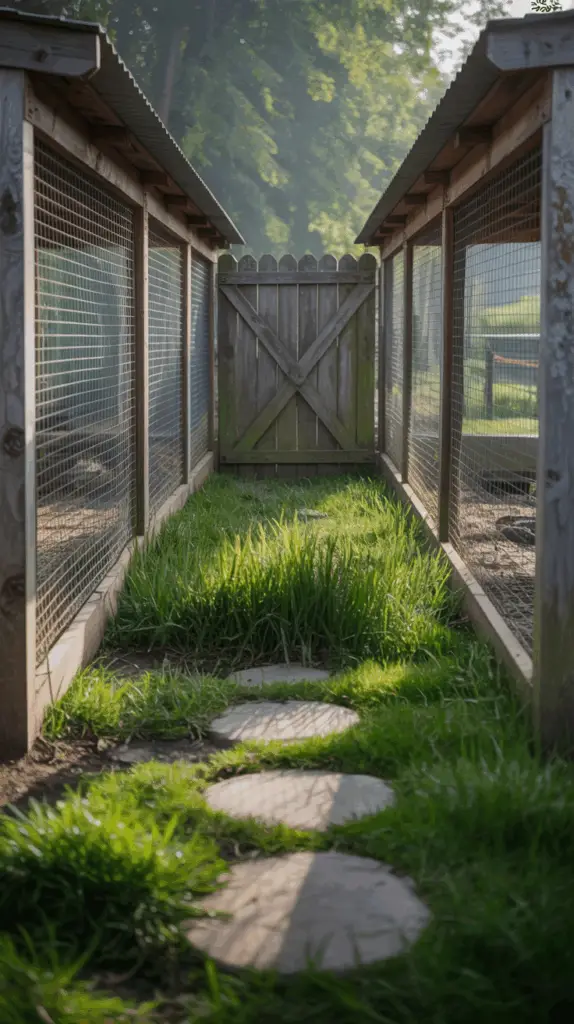
For anyone with a bit more yard, this setup keeps your ducks and your grass equally happy. Build two adjoining run spaces separated by a little gate, and rotate the ducks between them every week or so.
Use wire fencing with a wood frame for clean lines, and add stepping stones or a gravel path between zones for easy access. One side can stay grassy while the other recovers—bonus points if you toss down a few dandelions and let them forage. It’s practical, tidy, and actually kinda fun to manage.
Deck-Adjacent Duck Run with Raised Coop Access

If your deck overlooks part of the yard, build a duck run right alongside it. Keep the fencing low and match it to your deck wood if possible—cedar or black-stained pine works great. The coop itself can be raised with a little ramp, making cleaning easier and giving them a dry hideaway underneath.
A stock tank or half-barrel water tub adds splash appeal without digging a full pond, and a few large flat rocks make great sunny nap spots. You can sip your coffee and watch the chaos from above.
Woodland Edge Duck Run with Leaf Litter and Logs

If your backyard fades into forest or even has a big cluster of trees, use it. Ducks love shady, damp areas with things to nibble. Create a fenced run that weaves between trunks, using natural wood posts and wire mesh.
Skip the gravel and go for thick leaf litter and mulch on the floor. Add a few mossy logs, a low water pan, and a small wooden shelter tucked into a corner. It feels a bit wild and overgrown—in a cozy, storybook kind of way.
Urban Balcony-Inspired Duck Run for Small Yards
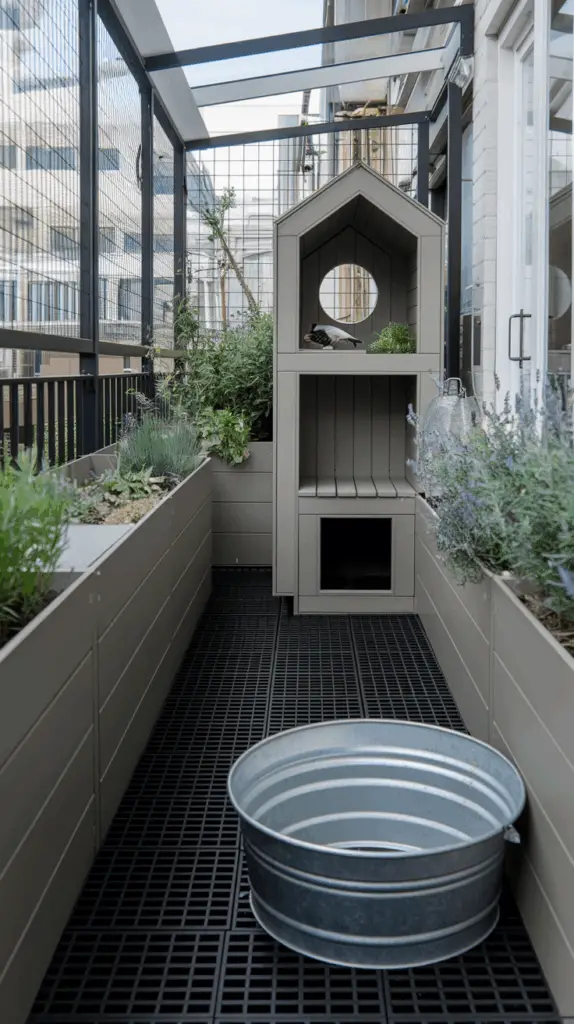
Even in tighter city spaces, you can still give ducks room to explore. Try using modular panels to build a compact run along the back wall of a courtyard or even the edge of a parking pad. Keep the design sleek—think matte black fencing, planter boxes with herbs or lavender, and a small, cube-style shelter that doubles as a bench.
Line the floor with rubber mats or decking tiles for easy rinsing. Add a galvanized steel tub for their splashy needs, and you’ve got a duck run that’s urban chic without being all grey and sterile.
Suburban Side Garden Run with Vertical Greenery

You know that patch between the garage and the back fence? It’s usually full of weeds or forgotten tools—but it’s prime duck territory. Set up a narrow run using framed mesh panels and hang planters or trellises along the wall to grow strawberries or sweet potato vines.
The coop can be tucked under a window, with a low-profile roof and a side hatch for cleaning. Add a rain barrel with a spigot to fill their splash bin, and your ducks get a fully functioning spa—and you get an actually cute side yard.
Coastal-Inspired Duck Run with White Sand and Driftwood
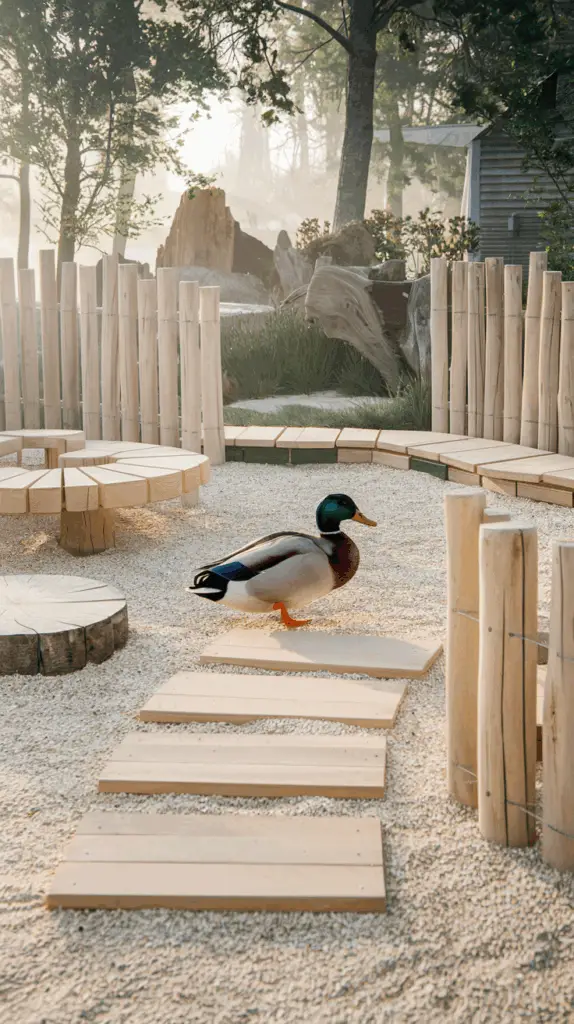
If you’re lucky enough to live near the sea (or just want the vibe), go coastal with your duck space. Use pale gravel or clean white sand for flooring, and fence the area with light-toned wood or weathered panels. Add a mini boardwalk made from decking planks, a driftwood perch, and maybe even a few seagrass planters.
The coop? Whitewashed timber with a blue metal roof, of course. Bonus: ducks naturally love water, so if you’re near a beachy pond or can fit a stock tank, it feels like a mini seaside holiday—for them and for you.
Luxury Garden Duck Run with Formal Landscaping
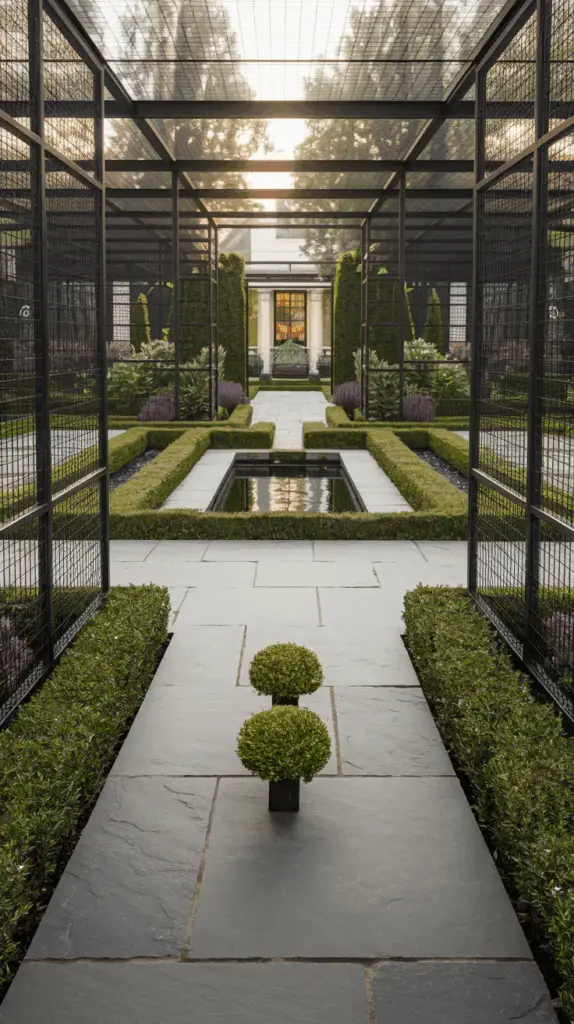
For a more polished backyard, you can still keep ducks without compromising your landscaping goals. Build a low-profile run that curves along a hedge or follows the edge of a gravel path. Use black welded mesh with trimmed boxwood borders, and place the duck house discreetly behind a tall shrub or custom trellis.
A small rectangular pond lined with slate tiles and a solar-powered bubbler keeps things elegant. Think more “manicured courtyard” than “barnyard chaos.” The ducks won’t care—but you will.
Rustic Country Duck Run with Log Frame and Wildflowers
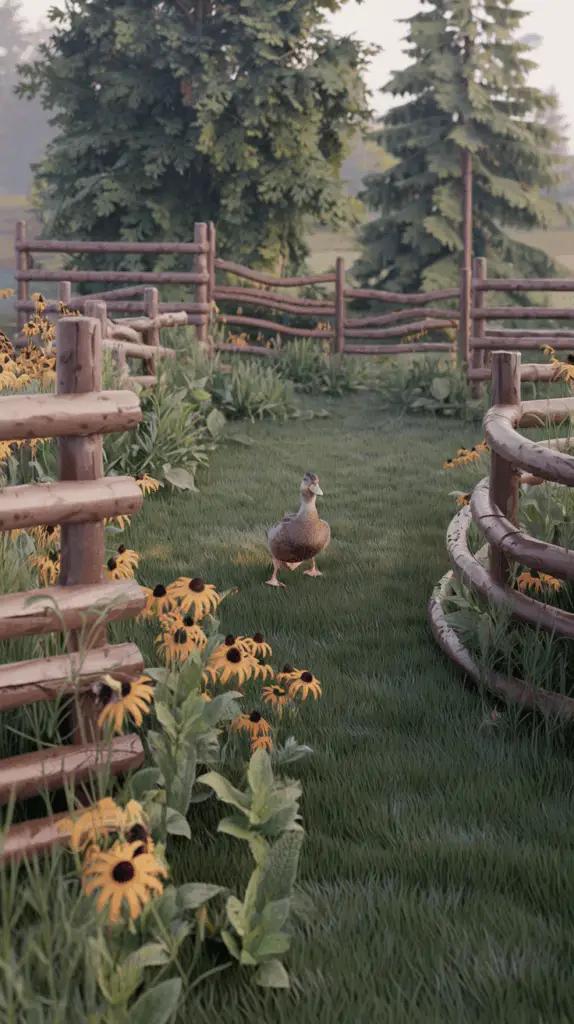
Back in the countryside or at the edge of a forest, you can lean into a more earthy, handcrafted feel. Use split logs or untreated timber posts to build your pen, and let the fencing follow the natural curves of the yard. The duck house can be made from reclaimed barn wood, propped up slightly on blocks to stay dry, with a thick straw bed inside.
Let the wildflowers grow up along the fencing—black-eyed Susans, mint, and calendula all make great duck neighbors. It’s a little messy, a little magical, and very much at home in a rural garden.
Final Thoughts
The best duck runs aren’t about perfection—they’re about making something that fits your space, feels good in your garden, and gives your ducks a place to waddle, splash, and nap safely. Whether you’ve got a shady forest edge or a concrete courtyard, there’s a way to build a space that feels right. Keep it simple, lean into your setting, and trust that your ducks don’t need fancy—just thoughtful.

